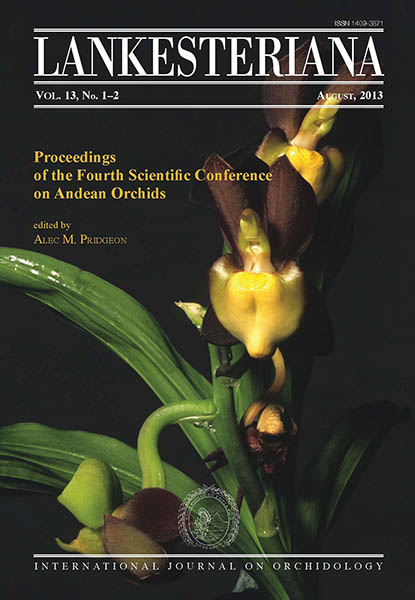Orchids without borders: studying the hotspot of costa rica and Panama
DOI:
https://doi.org/10.15517/lank.v0i0.11529Keywords:
orchidaceae, mesoamerica, costa rica, panama, floristics, taxonomyAbstract
The Mesoamerican region is one of the richest in orchid diversity in the world. About 2670 species, 10% of all orchids known have been recorded there. Within this region, most of the species are concentrated in the southernmost countries. Costa Rica with 1598 species (or 0.030 spp/km2) and Panama with 1397 species (0.018 spp/km2) stand at the top of endemic species list of all Mesoamerica, with 35.37% and 28.52%, respectively. These figures, however, are misleading, as political boundaries do not have any relationship to orchid diversity. If we ignore the political frontier, there is a common biogeographic area. However, if we put the border back, the numbers in terms of scientific production and research change dramatically. Costa Rica has increased the knowledge of its orchid flora through the establishment of a successful research system, whereas Panama has lacked a similar process. To address this problem, the Lankester Botanical Garden at the Universidad de Costa Rica and the Universidad Autónoma de Chiriquí, Panama, established a new research center focused on the study of orchids. The aim of the cooperation is to provide the methodology, information, and expertise for a longterm project on taxonomy and systematics of the orchids of Panam.Downloads
Download data is not yet available.
Downloads
How to Cite
Bogarín, D., Pupulin, F., Arrocha, C., & Warner, J. (2013). Orchids without borders: studying the hotspot of costa rica and Panama. Lankesteriana: International Journal on Orchidology, 13(1-2). https://doi.org/10.15517/lank.v0i0.11529
Issue
Section
Articles
License
According to the Open Access policy promoted by the University of Costa Rica, all the papers published by Lankesteriana are licensed under the Creative Commons copyright and can be downloaded free of charge. The journal holds copyright and publishing rights under the CC BY-NC-ND 3.0 CR license.
Before the publication of the materials submitted by the author(s) in LANKESTERIANA, the author(s) hereby assign all rights in the article to the Lankester Botanical Garden.





